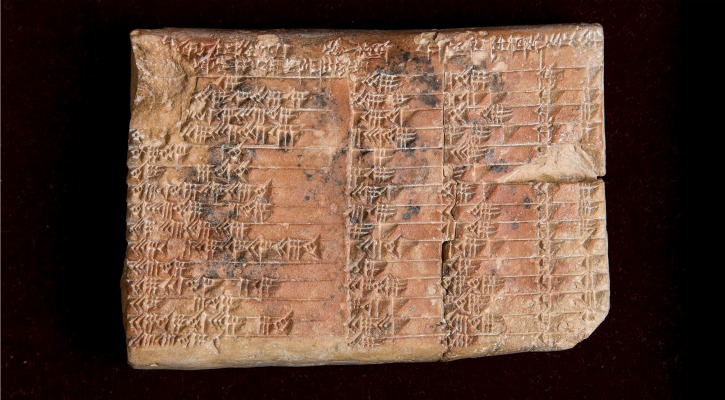
The transcription and (translation) are copied from Friberg.ġ. The tablet shown here is MS3874 in the Schøyen collection. If we were to try a similar construction with our decimals, the list could only include $1, 2\leftrightarrow 5, 4\leftrightarrow 25, 8\leftrightarrow 125$ and $16\leftrightarrow 625$. The numbers in the standard table have the property that they and their reciprocals require no more than three sexagesimal places. Since 1 represents any power of $60 = 2^2\cdot 3\cdot 5$, these numbers must all be regular: they can have only 2, 3, and 5 as prime factors. There are tables of squares, of square roots, of cube roots and of similar computations here we will concentrate on the two most basic: multiplication tables and tables of reciprocals (for Old Babylonians, division by $n$ amounted to multiplication by $\frac$, some also give 1 12, 1 15, 1 20. A significant difference is the listing of $0$ as a number the Old Babylonians had no such symbol. The format is the same as the Old Babylonian (see the 12-times table below).

Multiplication tables from my Grade 3B notebook. But along with the problem texts are "table texts," which can be understood by anyone who has mastered the Babylonian number system they are the first known examples of a tradition of mathematical table-making that is still alive and useful today. Even the geometry problems require a specialized vocabulary and familiarity with the Babylonian way of explaining a solution. Understanding word problems requires, besides a knowledge of the language used to record them, a thorough understanding of the culture (in particular the different systems of units and their relation). Many of the problems involve geometry the rest are almost always "word problems" where the context is the calculation of the area of an irregular field, the volume of a ditch, the number of bricks to build a ramp. Many of the mathematical tablets are "problem texts:" they contain problems or sets of problems, sometimes with solutions. For example, the collection of the University of Pennsylvania Museum of Archaeology and Anthropology, catalogued, with photographs, on the website of the Cuneiform Digital Library Initiative, includes 458 Old Babylonian mathematical tablets (of which about 110 have been published).įor Old Babylonians, mathematics was practical.

Hundreds of thousands of tablets have been excavated from the ruins of this civilization perhaps a thousand or so of these concern mathematics. Documents at the time were written in cuneiform ("wedge-shaped") characters on clay tablets, most of them rectangular and of a size to be held comfortably in the hand (about $5\times 8$cm or $2\times 3$ inches). "Old Babylonian" refers here to the civilization that flourished some four thousand years ago (around 2000 B.C.) in what is present-day Iraq. Old Babylonian Multiplication and Reciprocal Tables These "table texts" are the first known examples of a tradition of mathematical table-making that is still alive and useful today.Īn online survey of Old Babylonian mathematics is available on Duncan Melville's website.


 0 kommentar(er)
0 kommentar(er)
